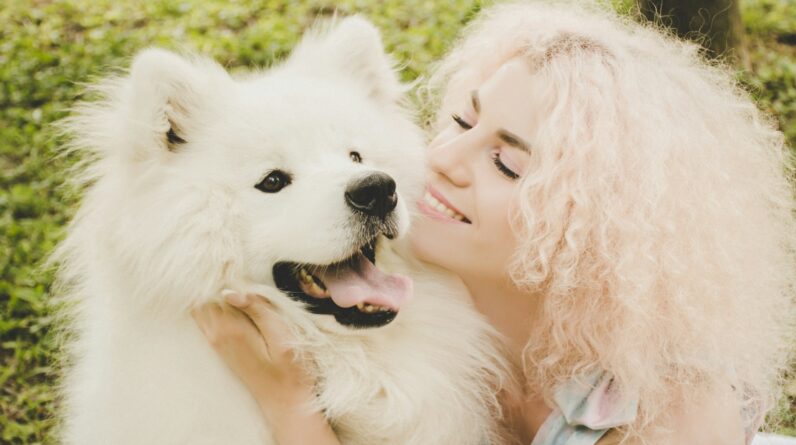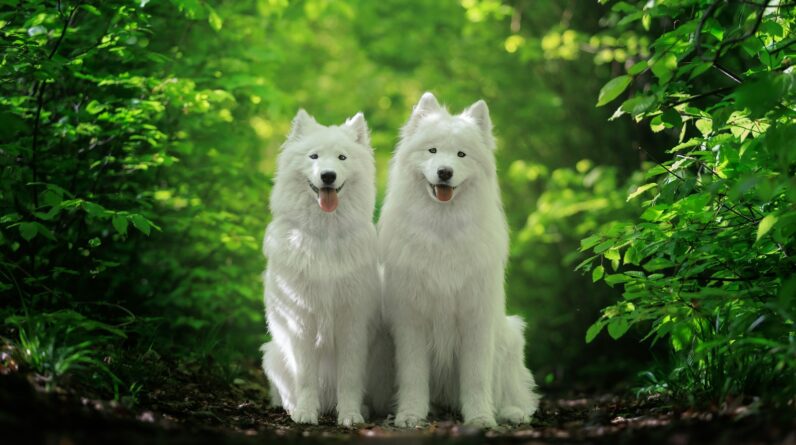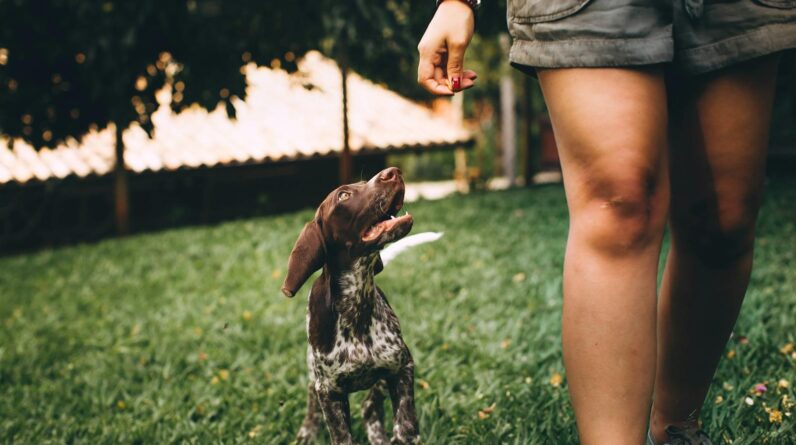
Tail Wagging: What It Really Means
Have you ever seen a dog’s tail go back and forth really fast and wondered what it’s all about? Well, you’re not alone! Tons of people watch their pups wag away and think the dog must be super happy. But hold on a second. It’s not always that simple. Tails are like a secret code that dogs use to tell us and other dogs how they’re feeling.
Happy Tails
Yes, a lot of times when a dog wags its tail, it’s a happy dance. Imagine you just got home from school, and your dog greets you with a wagging tail. That’s pooch for “Yay, my favorite human is back!” When the tail goes crazy like that, you can bet your dog is thrilled to see you.
The Not-So-Happy Tails
But here’s where it gets tricky. Dogs also wag their tails when they’re not happy. Sometimes, if a dog is feeling nervous or scared, its tail will still move. This is not a party wag. This is more like saying, “Um, I’m not sure about this.” So how can you tell the difference? Besides the tail, look at the rest of the dog too. Are their ears up and relaxed or down and back? Is the rest of their body loose like spaghetti or stiff like a board? This can help you figure out if the tail wag is a thumbs up or a thumbs down.
Side to Side and Up High
When a dog’s tail is wagging with the tail up high, it’s a bit like saying “Look at me, I’m in charge here.” This might be a dog that thinks it’s the boss or maybe it’s just feeling super confident at that moment.
Slow Mo Wag
A slow tail wag with the tail down low can be hello of the dog kind. It’s like when you just kind of wave to someone because you sort of know them, but you’re not doing a happy dance. It’s chill. The dog is probably calm and being polite, so this is a good sign that the dog is cool but not over the moon.
The Question Wag
Ever witnessed a tail that’s just kind of wiggling in the middle? This could be a doggie question mark. It’s like the dog is saying, “Hmm, what’s going on here?” They are curious, trying to figure things out. They might wag this way when they meet new people or dogs or when they smell something interesting.
The Scared Wag
Now, if you see a tail tucked way down low or even between the dog’s legs, it’s a different story. This is usually a sign that the dog is scared or feeling really unsure about something. If you ever see this, it’s a good idea to give the dog some space and not try to pet it. It’s not feeling super social at that moment.
Fast versus Slow
The speed of the wag also tells us something. A tail that’s moving like a hummingbird’s wings is probably a super excited tail. But a tail that’s moving slow and steady? That might mean the dog is relaxed and just taking it easy. Speed can make a big difference in understanding tail talk.
The Full Body Wag
Oh, and sometimes, it’s not just about the tail. Some dogs get so happy, their whole backside shakes along with the tail—that’s the ultimate happy wag. When you see that, you know for sure your furry friend is filled with joy.
About the Tail Itself
Remember, different dogs have different tails. Some are long and fluffy, some are short and stubby. Just like people, dogs are unique. You’ve got to get to know a dog and its tail-wagging ways to really understand what it’s trying to say.
Why Do They Even Wag?
So why do dogs even wag their tails in the first place? Scientists think that way back when dogs were wild, they started wagging to show each other how they felt without making noise. It was a sneaky way to talk to other dogs without alerting prey or predators. And this clever bit of body language stuck around even when they became our best buddies.
Dogs are awesome, aren’t they? They have this whole tail language that they use to communicate. The next time you see a dog wagging its tail, take a moment to be a tail detective. Look at their face, their body, and, of course, that wiggly tail. You might just crack the code on how that dog is feeling. Understanding tail wagging is like learning to speak a little bit of dog, and that’s super cool. Just keep watching the wags, and you’ll get the hang of it in no time.
Why does my dog wag their tail?
When your dog wags their tail, it’s often a sign of happiness or excitement. They may be greeting you or showing enthusiasm for an activity, like playtime or a walk. Tail wagging is a way dogs express various emotions, so context matters a lot.
It’s not just about being cheerful; dogs also wag their tails when they’re curious or focused on something. If your pooch is wagging while intently staring at a treat, they’re likely showing anticipation and interest. Watch their body language to fully understand what they’re feeling.
Can a dog’s tail wagging mean they are scared?
Yes, a dog can wag their tail when they’re scared. It might not be the same vigorous wagging you see when they’re happy, though. A slow, low wag can suggest insecurity or fear. Their body might be tense, and other signs like whimpering can also appear.
Always look at the whole situation. If your dog’s in an unfamiliar or intimidating environment, their wagging tail could mean they’re trying to appease or they’re nervously assessing things. It’s their way of dealing with stress or discomfort.
What does it mean when a dog holds its tail still while wagging only the tip?
If a dog is holding its tail still but wagging just the tip, it can be a sign of mild interest or a tentative greeting. It’s like your dog saying, “I’m curious about you, but I’m still deciding how I feel.” It’s a subtle form of communication.
Keep in mind this delicate wag usually requires closer observation. If a dog’s not sure about a situation or person, they might do this as they’re taking it all in. It’s not an aggressive signal, but one of tentative engagement.
Is it true that the direction of tail wagging has a meaning?
Actually, some studies suggest the direction of tail wagging can hint at a dog’s emotions. A wag more to the right side can mean positive feelings, while a left-sided wag might indicate negative emotions. It’s quite fascinating how dogs have such detailed ways of expressing themselves.
While these findings are intriguing, it’s important to remember they’re not always so clear-cut. Other aspects of body language play a huge role, so don’t rely only on wag directions. It’s just one piece of the communication puzzle.
Does the height at which a dog holds its tail matter?
Definitely! The height of a dog’s tail can clue you in on their confidence level. A high, stiff tail often shows confidence and alertness, maybe even a bit of dominance. When they’re relaxed and comfortable, their tail will usually be in a more neutral, natural position.
On the flip side, if a dog tucks its tail between its legs, it’s a strong sign they’re scared or trying to appease. They do this to protect themselves, showing they’re not a threat. Always take tail height into account when you’re reading their mood.
Key Takeaways
- Guess what? A dog’s tail can be like a mood ring, telling you how they feel. If you see that tail wagging fast, your furry friend is likely super excited or happy to see you.
- But a slow wag isn’t just a lazy version of happiness—it can be a sign your pooch is unsure about something. So take note, it’s not always about being chill.
- When you spot a tail tucked between the legs, that’s doggy language for “I’m not feeling great.” It could mean they’re scared or not too comfortable with what’s happening around them.
- Don’t just watch the tail though—check out the context. Where they’re wagging it can clue you in on whether they’re ready to play or would rather keep their distance. High and waggy? Think happy and confident. Low and slow? More on the cautious side.
- It’s not just how or where they wag, but what the tail looks like. A fluffy, puffed-up tail can mean your dog is on high alert, while a relaxed tail is just that: your dog at ease and feeling fine.
- Don’t forget, every dog is unique. So while tail talk is universal, your dog might have their style of wagging. Spend time observing to get the full scoop on what they’re trying to say.
- Watch the wag when you see other dogs and humans interacting with your pooch. Dogs use tail signals to talk to each other too, so you can learn a lot by observing their four-legged conversations.
- Dog tail communication is a rich language all on its own. Keep an eye out for those tail movements, think about what’s happening around your dog, and you’ll become pretty good at understanding your dog’s tail tales.
Final Thoughts
So, remember when you thought a wagging tail just meant Fido was happy to see you? Turns out it’s way more complex. Tail wagging can signal everything from ‘Hey, I’m boss around here’ to ‘Chill out, dude, just passing through’. It’s all in the wag: left, right, high, low. Our furry pals are communicating with a whole tail language we’re just starting to get.
It’s kinda like they’re waving flags to express their inner feels. The speed and direction of the wag matter big time. Super-fast wiggles might mean excitement, slow wags could be insecurity. High tail? Confident pooch. Low tail? Not feeling top dog. Next time your four-legged buddy starts tail-talking, pay attention. It’s like learning a secret handshake that gets you into the cool dogs’ club.







